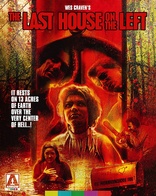The Last House on the Left Blu-ray Movie
HomeThe Last House on the Left Blu-ray Movie 
Remastered | Limited Edition / Blu-ray + CDArrow | 1972 | 1 Movie, 3 Cuts | 84 min | Unrated | Jul 03, 2018
Movie rating
6.2 | / 10 |
Blu-ray rating
| Users | 0.0 | |
| Reviewer | 4.0 | |
| Overall | 4.0 |
Overview
The Last House on the Left (1972)
On their way to a rock concert, two teenagers are kidnapped by a gang of escaped convicts. Although they put up the fight of their lives, the girls are drugged, tossed in a car trunk and driven into the woods by the savage, murderous gang... only to wake up to a horror they could not have imagined.
Starring: Sandra Peabody, Lucy Grantham, David Hess, Fred J. Lincoln, Jeramie RainDirector: Wes Craven
| Horror | Uncertain |
| Thriller | Uncertain |
Specifications
Video
Video codec: MPEG-4 AVC
Video resolution: 1080p
Aspect ratio: 1.85:1
Original aspect ratio: 1.85:1
Audio
English: LPCM Mono (48kHz, 24-bit)
BDInfo
Subtitles
English SDH
Discs
Blu-ray Disc
Three-disc set (2 BDs, 1 CD)
Playback
Region A, B (locked)
Review
Rating summary
| Movie | 3.0 | |
| Video | 4.5 | |
| Audio | 4.0 | |
| Extras | 5.0 | |
| Overall | 4.0 |
The Last House on the Left Blu-ray Movie Review
Reviewed by Jeffrey Kauffman July 5, 2018Wes Craven, porn purveyor? It may sound outlandish, but as my colleague Casey Broadwater mentions in his The Last House on the Left Blu-ray review of the Metro Goldwyn Mayer release from 2011, it could have happened had Craven's initial intentions for The Last House on the Left been realized. It’s kind of interesting in that regard to compare Craven’s nascent film career and where it ultimately ended up going with someone like Herschell Gordon Lewis, another director who flirted with so-called "nudie" films but who was never really able to escape the confines of so-called “Grade Z” productions (for those unacquainted with Lewis, a good place to begin is Arrow’s impressive The Herschell Gordon Lewis Feast). While it may seem positively ludicrous to link Craven’s first feature film too materially to Ingmar Bergman’s legendary The Virgin Spring , The Last House on the Left does owe the inspiration for at least some elements of its disturbing plot to the Academy Award winning masterpiece, but it’s also probably salient to place the film in the context of the then still viscerally remembered Manson Family massacres. Unlike any number of Herschell Gordon Lewis films, Craven’s feature film debut actually scored hugely at the box office, something that no doubt contributed to his ability to climb the ranks of Hollywood writer-directors, and while there’s an arguably “not quite ready for prime time” ambience surrounding some aspects of The Last House on the Left, the film is still an undeniably unsettling viewing experience.
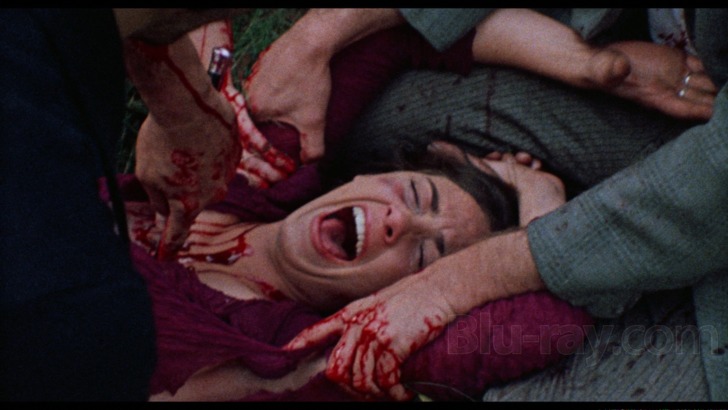
As is my "tradition" concerning re-releases of films that have already had at least one previous outing on Blu-ray, I won't bother with another plot summary, since Casey's The Last House on the Left Blu-ray review does such a good job in that regard. The bulk of this review will address video and audio quality, as well as the bounteous supplementary material Arrow has assembled for this release.
The Last House on the Left Blu-ray Movie, Video Quality 

The Last House on the Left is presented on Blu-ray courtesy of Arrow Video with an AVC encoded 1080p transfer in 1.85:1. The extensive documentation on the transfer included in Arrow's impressive insert booklet contains the following information:
The Last House on the Left was exclusively restored by Arrow Films and is presented in its original aspect ratio of 1.85:1 with mono sound.As is kind of hinted at in the above verbiage, there are some rough spots to be seen in this transfer, though generally speaking there are clear improvements over the MGM release in terms of damage mitigation, overall palette saturation and (maybe especially) grain resolution. There's no escaping the grittiness of this presentation due to its 16mm filming source, and in fact there are occasional resolution and/or compression hurdles that are faced, especially in darker moments (see screenshots 18 and 19 for an idea of what some of the "chunkier" moments can look like). But in terms of non- problematic grain resolution, compare screenshot 5 from this review with screenshot 2 in Casey's original review and it's apparent that there's a less clumpy and less near-pixellated look to this release. In fact, a lot of the outdoor material really pops extremely well, with grain looking relatively fine (i.e., not overly coarse). Even some fairly dark scenes have less of the chroma-like anomalies that were sometimes seen in the MGM release (again, compare screenshot 2 of this release with screenshot 19 in Casey's review, though admittedly this is a fairly minor difference). Detail levels are never fantastic, as befits the source and the guerilla filmmaking style employed, but extreme close-ups (of which there are plenty) can still offer rather surprising amounts of fine detail at times. While I wouldn't say there's a whale of a lot of difference between the color temperatures of the two releases, the MGM release does look a tad brighter to my eyes, something that may tend to give some of the hues just a bit more vividness (compare the purple sweater in screenshot 4 of this review with screenshot 5 of Casey's review for just one example, with an understanding that these are obviously slightly different frames).
An extensive international search for materials was undertaken to ensure that the best existing materials were sourced for this restoration. As the original 16mm AB negative for The Last House on the Left has been lost, the objective was to locate the first generation 35mm intermediate elements struck from the 16mm negatives or the closest possible element in terms of lab generation. This was a daunting task, as the independent production and "grindhouse" distribution history of the film meant that proper detailed records were not kept and identifying original materials with any real certainty was often difficult. 35mm interpositive, internegative, dupe negative and multiple 35mm print materials were accessed from MGM's film library and film producer Sean Cunningham's film archives held at Film Lager in Germany. After a series of test comparison, the 35mm dupe negative help by Sean Cunningham was identified as the highest quality element, and likely the closest element in existence to the original 16mm negatives.
This 35mm dupe negative elements was scanned in 2K resolution at CinePostproduction GmbH. Additional interpositive elements were accessed from MGM and a 35mm print sourced from Severin Film to complete the sections unique to the Krug & Company and R-Rated versions. These sections were scanned in 2K at Deluxe's EFILM facility in Burbank.
The film was graded on Digital Vision's Nucoda Film Master and restored at R3Store Studios in London. Thousands of instances of dirt, debris, scratches, picture instability, density fluctuation and other film wear were repaired or removed through a combination of digital restoration tools and techniques. Given the independent nature of the film's production, some issues such as gate hairs and original negative damage remain, as to occasional instances of production mistakes, such as loose focus and loose synch against overdubbed dialogue. The original mono mixes were remastered by MGM.
The Last House on the Left Blu-ray Movie, Audio Quality 
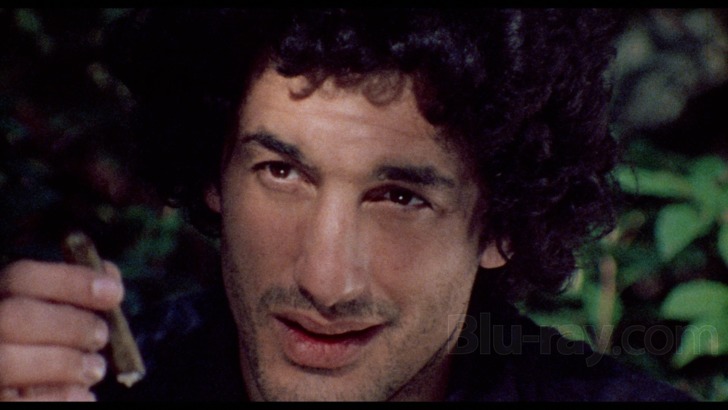
The Last House on the Left features an LPCM Mono track which duplicates the film's less than state of the art audio without any issues other than source related recording anomalies (there are some clear ambient differences that can be heard, some of which I'm assuming are due to post- looping). While the entire track sounds a little thin at times, dialogue and David Hess' kind of weirdly charming score (also available on a standalone CD included with this release) show no real signs of outright damage or distortion.
The Last House on the Left Blu-ray Movie, Special Features and Extras 
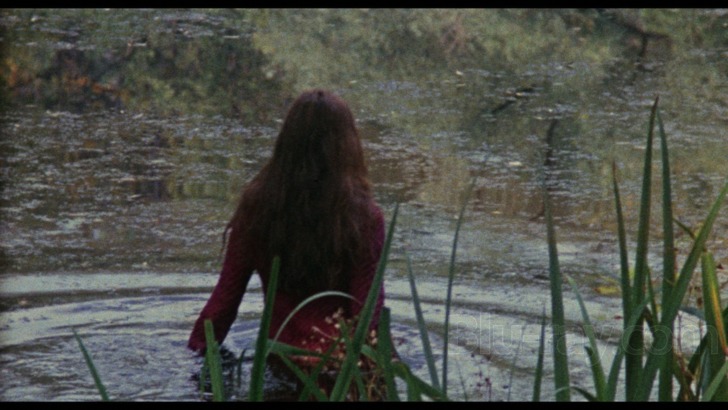
Disc One
- Unrated Cut (1080p; 1:24:12)
- Introduction by Wes Craven (1080p; 00:40) is accessible under the main Play Menu. The film automatically follows after the introduction by Craven.
- Still Standing: The Legacy of Last House on the Left (1080i; 14:54) is an archival 2009 piece featuring Wes Craven.
- Celluloid Crime of the Century (1080i; 39:34) is an archival piece from 2002 featuring Craven, Sean S. Cunningham, David Hess, Fred Lincoln, Jeramie Rain, Marc Sheffler and Martin Kove.
- Scoring Last House on the Left (1080i; 9:44) is an archival piece from 2002 with actor/composer David Hess.
- It's Only a Movie: The Making Last House on the Left (1080i; 29:01) is another archival piece from 2002 with some fun interviews and candid shots.
- Forbidden Footage (1080i; 8:12) is yet another archival piece with the cast and crew discussing some of the film's more notorious sequences.
- Junior's Story (1080p; 14:24) is a 2017 interview with Marc Sheffler, who kind of looks like he may have gone the Lubavitcher route.
- Blood and Guts (1080p; 13:52) is a 2018 "conversation" with makeup artist Anne Paul.
- The Road Leads to Terror: The Locations of Last House (1080p; 5:48) offers Michael Gingold as a tour guide in this 2018 piece.
- Deleted Scene: "Mari Dying at the Lake" (1080p; 1:04) offers an extended version of a short sequence seen in the Krug and Company cut of the film.
- Outtakes and Dailies (1080p; 47:38) are silent.
- Trailers, TV and Radio Spots
- Trailer 1 (1080p; 1:14)
- Trailer 2 (1080p; 2:06)
- TV Spot (1080p; 00:32)
- Radio Spots (5:45)
- Image Galleries
- Stills (1080p)
- Promotional Material (1080p)
- Audio Commentaries
- Audio Commentary by Bill Ackerman and Amanda Reyes (new)
- Audio Commentary with Wes Craven and Sean S. Cunningham
- Audio Commentary with David Hess, Marc Sheffler and Fred Lincoln
- Isolated Score is presented in LPCM 2.0.
- Krug & Company Cut (1080p; 1:23:50)
- R Rated Cut (1080p; 1:21:52)
- The Craven Touch (1080p; 17:10) is a new retrospective featuring Sean S. Cunningham, Charles Bernstein, Peter Locke, Mark Irwin and Amanda Wyss discussing Craven's history and legacy.
- Early Days and "Night of Vengeance" (1080p; 9:04) is another new reminiscence, this one featuring Roy Frumkes.
- Tales That Will Tear Your Heart Out (1080p; 11:19) is some silent footage from an unfinished project by Craven.
- Marc Sheffler Q & A (1080p; 12:25) stems from a screening of Last House on the Left held in Los Angeles in July 2017.
- Songs in the Key of Krug (1080p; 9:41) is an archival interview with David Hess which Arrow touts as never having been seen before.
- Krug Conquers England (1080i; 24:12) is an archival piece which documents the first showing of the unrated cut of The Last House on the Left in the United Kingdom.
Additionally, this is another handsomely packaged release from Arrow, which also includes a really nicely done booklet along with a poster.
The Last House on the Left Blu-ray Movie, Overall Score and Recommendation 
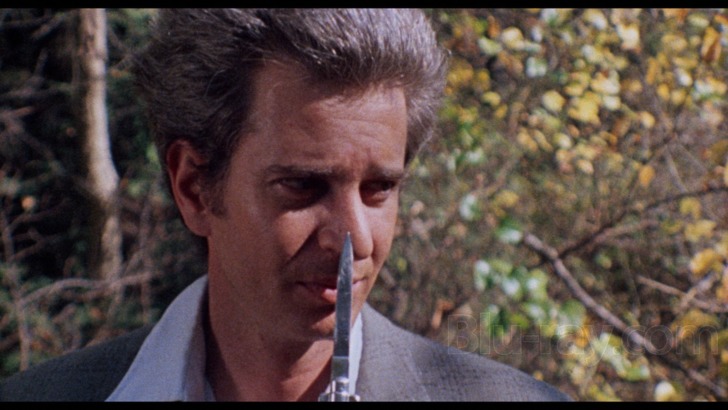
Casey readily admitted in his review that he wasn't a big fan of The Last House on the Left, and I have to say I'm a "fellow traveler" with him in that regard. That said, there is an undeniably visceral quality to this film that is not soon forgotten, and it certainly stands as a cinematic testament to a mighty oak springing from a rather unlikely acorn. As tends to be the case with Arrow releases, this sports commendable technical merits along with excellent supplements. Recommended.
Other editions
The Last House on the Left: Other Editions

The Last House on the Left
1972

The Last House on The Left w/ Halloween FP
1972

The Last House on the Left
FYE Exclusive / Steelbook
1972

The Last House on the Left
Remastered
1972
Similar titles
Similar titles you might also like

I Spit on Your Grave
Unrated
2010

The Devil's Rejects 4K
2005

I Spit on Your Grave 4K
Day of the Woman
1978

Texas Chainsaw 3D
2013

Halloween 4K
2018

The Town That Dreaded Sundown
2014

Friday the 13th
Killer Cut
2009

The Last House on the Left
2009

Hatchet III
2013

Halloween 4: The Return of Michael Myers 4K
Collector's Edition
1988

The Texas Chain Saw Massacre 4K
1974

Chaos
2005

House of 1000 Corpses
2003

Friday the 13th Part 2
1981

The Hills Have Eyes
1977

The Texas Chainsaw Massacre: The Beginning 4K
Limited Edition
2006

The Burning 4K
Collector's Edition
1981

American Mary
2012

Hatchet
Unrated Director's Cut
2006

Morituris
Legions of the Dead
2011
